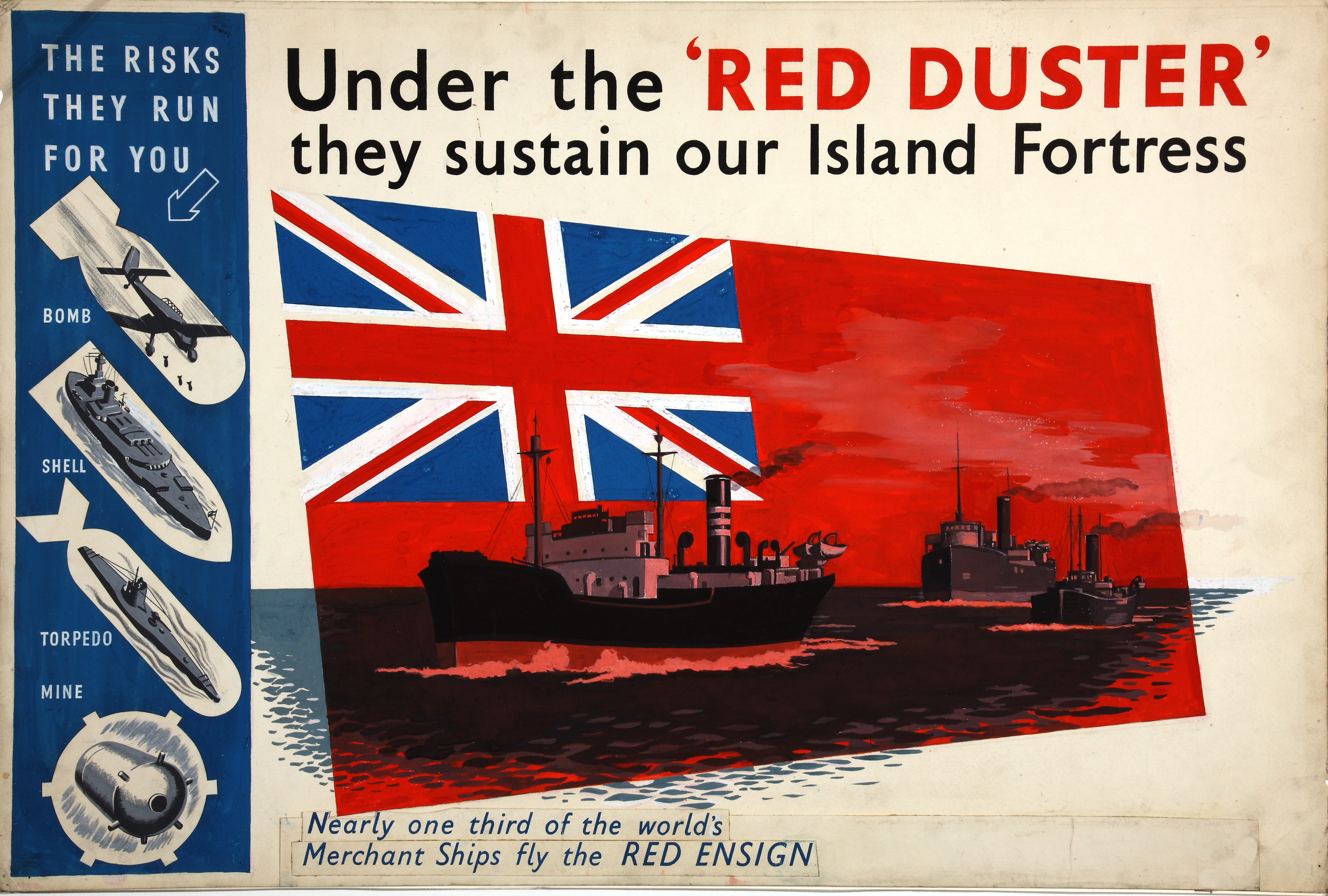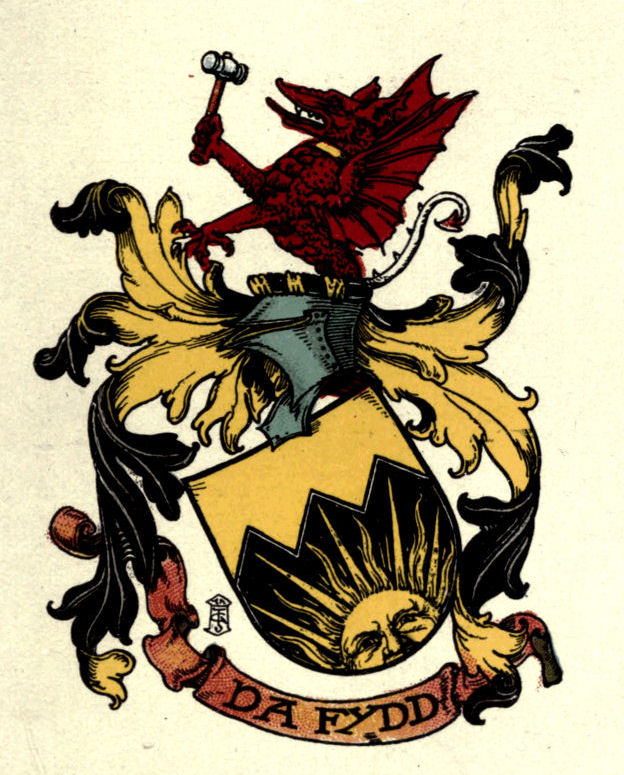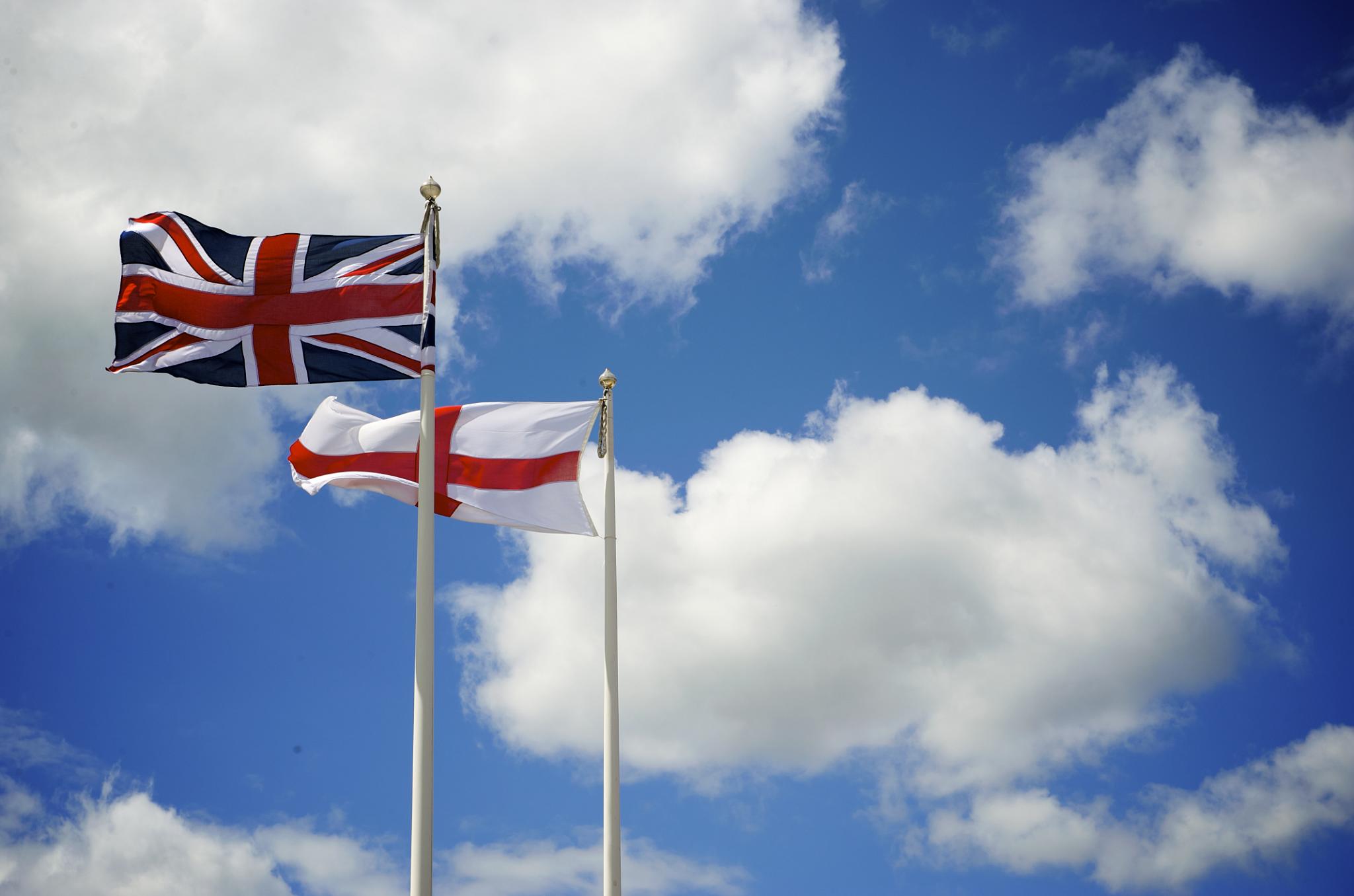|
Flag Of Great Britain (1707–1800)
The flag of Great Britain, often referred to as the King's Colour, first Union Flag, Union Jack, and British flag, was used at sea from 1606 and more generally from 1707 to 1801. It was the first flag of the Kingdom of Great Britain. It is the precursor to the Union Jack of 1801. The design was ordered by King James VI and I to be used on ships on the high seas, and it subsequently came into use as a national flag following the Treaty of Union and Acts of Union 1707, gaining the status of "the Ensign armorial of Great Britain", the newly created state. It was later adopted by land forces although the blue of the field used on land-based versions more closely resembled that of the blue of the flag of Scotland. The flag consists of the red cross of Saint George, patron saint of England, superimposed on the saltire of Saint Andrew, patron saint of Scotland. Its correct proportions are 3:5. The blue field on the flag was sky blue at first, but over time, the blue began to darken ... [...More Info...] [...Related Items...] OR: [Wikipedia] [Google] [Baidu] |
Red Ensign
The Red Ensign or Red Duster is the civil ensign of the United Kingdom. It is one of the British ensigns, and it is used either plain or defacement (flag), defaced with either a Glossary of vexillology#Flag elements, badge or a Glossary of vexillology#Flag elements, charge, mostly in the right half. It is the flag flown by British merchant or passenger ships since 1707. Prior to 1707, an Kingdom of England, English red ensign and a Kingdom of Scotland, Scottish red ensign were flown by the History of the Royal Navy (before 1707), English Royal Navy and the Royal Scots Navy, respectively. The precise date of the first appearance of these earlier red ensigns is not known, but surviving payment receipts indicate that the English navy was paying to have such flags sewn in the 1620s. History England (pre-1707) Prior to the reorganisation of the Royal Navy in 1864, the plain red ensign had been the ensign of one of three squadrons of the Royal Navy, the Coloured squadrons of ... [...More Info...] [...Related Items...] OR: [Wikipedia] [Google] [Baidu] |
Scotland
Scotland is a Countries of the United Kingdom, country that is part of the United Kingdom. It contains nearly one-third of the United Kingdom's land area, consisting of the northern part of the island of Great Britain and more than 790 adjacent Islands of Scotland, islands, principally in the archipelagos of the Hebrides and the Northern Isles. To the south-east, Scotland has its Anglo-Scottish border, only land border, which is long and shared with England; the country is surrounded by the Atlantic Ocean to the north and west, the North Sea to the north-east and east, and the Irish Sea to the south. The population in 2022 was 5,439,842. Edinburgh is the capital and Glasgow is the most populous of the cities of Scotland. The Kingdom of Scotland emerged as an independent sovereign state in the 9th century. In 1603, James VI succeeded to the thrones of Kingdom of England, England and Kingdom of Ireland, Ireland, forming a personal union of the Union of the Crowns, three kingdo ... [...More Info...] [...Related Items...] OR: [Wikipedia] [Google] [Baidu] |
Godspeed (ship)
''Godspeed'' was one of the three ships on the 1606–1607 voyage to the New World for the English Virginia Company of London which resulted in the founding of Jamestown in the new Colony of Virginia. Captained by Bartholomew Gosnold, she was joined by the '' Susan Constant'' and ''Discovery'' on the journey. History The ''Godspeed'' was a 40-ton fully rigged ship estimated to have had a hull in length. As part of the original fleet to Virginia, leaving on December 20, 1606, she carried 39 passengers, all male, and 13 sailors. The route included stops in the Canary Islands and Puerto Rico and, with better wind, would have taken about two months to traverse; instead, the voyage lasted 144 days. On June 22, 1607, Newport sailed back for London with '' Susan Constant'' and ''Godspeed'' carrying a load of supposedly precious minerals, leaving behind the 104 colonists and ''Discovery'' (to be used in exploring the area). Replicas In 1985, a replica of ''Godspeed'' (rigged as a ... [...More Info...] [...Related Items...] OR: [Wikipedia] [Google] [Baidu] |
Arthur Charles Fox-Davies
Arthur Charles Fox-Davies (28 February 1871 – 19 May 1928) was a British expert on heraldry. His ''Complete Guide to Heraldry'', published in 1909, has become a standard work on heraldry in England. A barrister by profession, Fox-Davies worked on several notable cases involving the peerage, and also worked as a journalist and novelist. Biography Arthur Charles Davies (known as Charlie) was born in Bristol, the second son of Thomas Edmond Davies (1839–1908) and his wife Maria Jane Fox, the daughter and co-heiress of alderman John Fox, JP. Fox-Davies was brought up from the early 1880s at Coalbrookdale in Shropshire, where his father worked for the Coalbrookdale Iron Company and had a house called "Paradise" which became his home in much of his adult life; his grandfather, Charles Davies of Cardigan in Wales, had been an ironmonger. He added his mother's maiden name to his own by deed poll on his nineteenth birthday in 1890, thereby changing his surname from Davies to Fox- ... [...More Info...] [...Related Items...] OR: [Wikipedia] [Google] [Baidu] |
Herald
A herald, or a herald of arms, is an officer of arms, ranking between pursuivant and king of arms. The title is commonly applied more broadly to all officers of arms. Heralds were originally messengers sent by monarchs or noblemen to convey messages or proclamations—in this sense being the predecessors of modern diplomats. In the Hundred Years' War, French heralds challenged King Henry V to fight. During the Battle of Agincourt, the English herald and the French herald, Montjoie, watched the battle together from a nearby hill; both agreed that the English were the victors, and Montjoie provided King Henry V, who thus earned the right to name the battle, with the name of the nearby castle. Like other officers of arms, a herald would often wear a surcoat, called a tabard, decorated with the coat of arms of his master. It was possibly due to their role in managing the tournaments of the Late Middle Ages that heralds came to be associated with the regulation of the ... [...More Info...] [...Related Items...] OR: [Wikipedia] [Google] [Baidu] |
Flag Of England
The flag of England is the national flag of England, a constituent country of the United Kingdom. It is derived from Saint George's Cross (heraldic blazon: ''Argent, a cross gules''). The association of the red cross as an emblem of England can be traced back to the Late Middle Ages when it was gradually, increasingly, used alongside the Royal arms of England#Royal banner of England, Royal Banner. It became the only saint's flag permitted to be flown in public as part of the English Reformation and at a similar time became the pre-eminent maritime flag referred to as a white ensign. It was used as a component in the design of the Union Jack in 1606. It has been widely used since the 1990s, specifically at national sporting events, especially during the campaigns of England's national football teams. Origins In 1188 Henry II of England and Philip II of France agreed to go on Third Crusade, a crusade, and that Henry would use a white cross and Philip a red cross (and not ... [...More Info...] [...Related Items...] OR: [Wikipedia] [Google] [Baidu] |
North Britain
North Britain is a term which has been used, particularly between the 17th and 19th centuries, for either the northern part of Great Britain or Scotland, which occupies the northernmost third of the island. "North Britains" could also refer to Britons from Scotland; with North Briton later the standard spelling. Its counterparts were South Britain, generally used to refer to England and Wales and West Britain, usually referring to Ireland. Origin Early uses of the designation have been noted after the 1603 Union of the Crowns of the Kingdoms of England and Scotland. In early use the term could refer to inhabitants of Scotland as well as the country itself; since at least the late 15th century, "Britain" could be equivalent to "Briton", even being used interchangeably in early texts. Accordingly, "North Britain" was sometimes used as equivalent to "North Briton". Francis Bacon wrote in 1604 that the union made "The people to be the South-Brittains and North-Brittains". The ''Ox ... [...More Info...] [...Related Items...] OR: [Wikipedia] [Google] [Baidu] |
Orders In Council
An Order in Council is a type of legislation in many countries, especially the Commonwealth realms. In the United Kingdom, this legislation is formally made in the name of the monarch by and with the advice and consent of the Privy Council ('' King-in-Council''); however, in other countries, the terminology may vary. Orders-in-Council are distinct from Orders of Council, which are made in the name of the Council without sovereign approval. Types, usage and terminology There are two principal types of order in council: orders in council whereby the King-in-Council exercises the royal prerogative, and orders in council made in accordance with an act of Parliament. In the United Kingdom, orders are formally made by the monarch with the advice of the Privy Council ('' King-in-Council or Queen-in-Council''). In Canada, federal orders in council are made in the name of the Governor General by the King's Privy Council for Canada; provincial orders-in-council are of the Lieutenant ... [...More Info...] [...Related Items...] OR: [Wikipedia] [Google] [Baidu] |
King Of Scots
The monarchy of the United Kingdom, commonly referred to as the British monarchy, is the form of government used by the United Kingdom by which a hereditary monarch reigns as the head of state, with their powers regulated by the British constitution. The term may also refer to the role of the royal family within the UK's broader political structure. The monarch since 8 September 2022 is King Charles III, who ascended the throne on the death of Queen Elizabeth II, his mother. The monarch and their immediate family undertake various official, ceremonial, diplomatic and representational duties. Although formally the monarch has authority over the governmentwhich is known as " His/Her Majesty's Government"this power may only be used according to laws enacted in Parliament and within constraints of convention and precedent. In practice the monarch's role, including that of Head of the Armed Forces, is limited to functions such as bestowing honours and appointing the prime mi ... [...More Info...] [...Related Items...] OR: [Wikipedia] [Google] [Baidu] |
James I Of England
James VI and I (James Charles Stuart; 19 June 1566 – 27 March 1625) was King of Scotland as James VI from 24 July 1567 and King of England and Ireland as James I from the union of the Scottish and English crowns on 24 March 1603 until his death in 1625. Although he long tried to get both countries to adopt a closer political union, the kingdoms of Scotland and England remained sovereign states, with their own parliaments, judiciaries, and laws, ruled by James in personal union. James was the son of Mary, Queen of Scots, and a great-great-grandson of Henry VII, King of England and Lord of Ireland, and thus a potential successor to all three thrones. He acceded to the Scottish throne at the age of thirteen months, after his mother was forced to abdicate in his favour. Although his mother was a Catholic, James was brought up as a Protestant. Four regents governed during his minority, which ended officially in 1578, though he did not gain full control of his governmen ... [...More Info...] [...Related Items...] OR: [Wikipedia] [Google] [Baidu] |
Union Flag
The Union Jack or Union Flag is the ''de facto'' national flag of the United Kingdom. The Union Jack was also used as the official flag of several British colonies and dominions before they adopted their own national flags. It is sometimes asserted that the term ''Union Jack'' properly refers only to naval usage, but this assertion was dismissed by the Flag Institute in 2013 after historical investigations. The origins of the earlier flag of Great Britain date from 1606. James VI and I, King James VI of Scotland had inherited the English and Irish thrones in 1603 as James I, thereby Union of the Crowns, uniting the crowns of Kingdom of England, England, Kingdom of Scotland, Scotland, and Kingdom of Ireland, Ireland in a personal union, although Scotland and England remained separate states until the Treaty of Union took effect in 1707. On 12 April 1606, a new flag to represent the regal union between these two nations was specified in a royal decree, according to which the fla ... [...More Info...] [...Related Items...] OR: [Wikipedia] [Google] [Baidu] |







